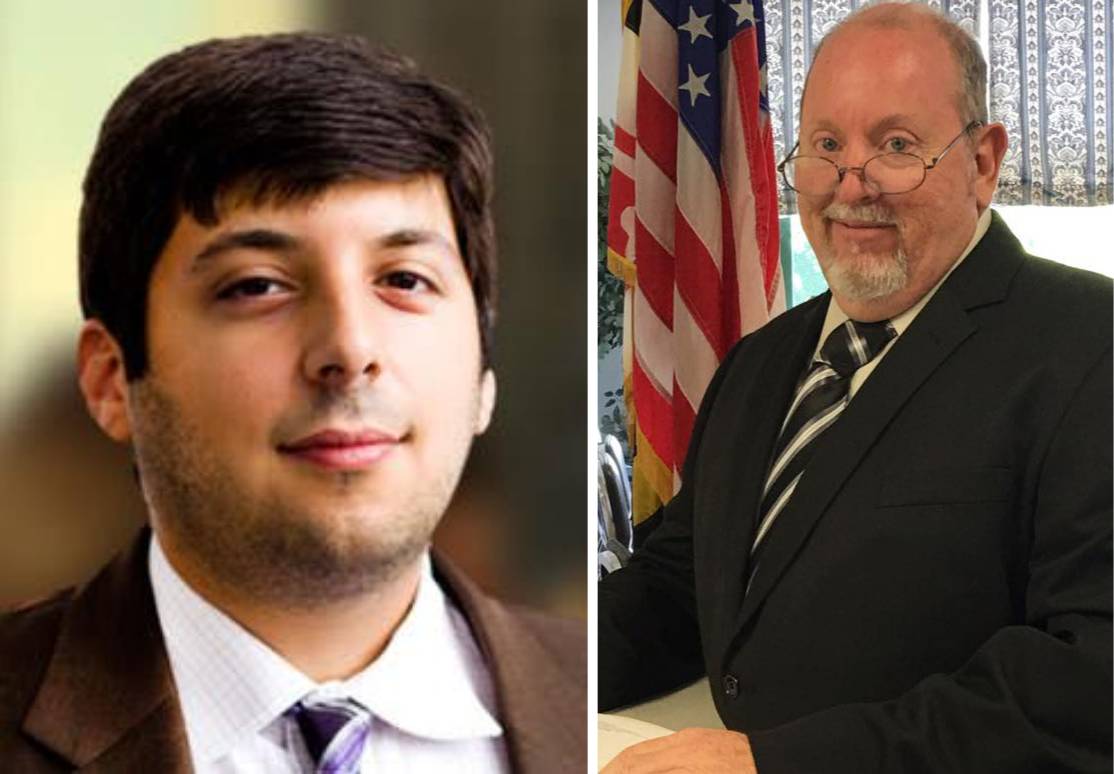ANNAPOLIS (October 27, 2018)—Despite the gubernatorial race being centered on Republican Larry Hogan and Democrat Ben Jealous, there are more than two names on the ballot for the state's highest office.
Shawn Quinn of the Libertarian party and Ian Schlakman of the Green party are the other two ballot-qualified candidates who are running for Maryland governor.
Quinn and Schlakman are no strangers to Maryland elections as both have run for office in the state before.
In the 2014 gubernatorial election, Quinn received nearly 24,000 votes, 1.5 percent of the state total. In 2010, he ran for the Maryland House of Delegates in Calvert County and his home county of St. Mary's.
Although his background may not be in politics, Quinn has a history of service. He served in the U.S. Navy for 20 years, from 1980 to 2000. He's also worked with the American Red Cross, in law enforcement in Newport News, Virginia, and is currently a government contractor, according to his website.
Quinn, 56, said he is motivated to run for office because he is sick of the status quo.
"I'm tired of the government reaching in my pocket," Quinn said. "Someone (needs to) put their foot down and (say) people come first."
Quinn, running with Christina Smith—a community activist from Hagerstown—stressed issues with improving veterans affairs and fixing the education system, but said one of his first policies if elected would be to end the "war on drugs."
"We need to get marijuana legalized … and to get money helping those battling addictions," he said.
Schlakman, a 33-year-old who grew up in New York, has also been looking to bring something new to the state of Maryland. He's run for office twice before, and lost, and has owned a small, computer-technology business.
In 2014, he ran for Maryland's 2nd Congressional District, losing to incumbent Dutch Ruppersberger. Following that, he lost a race for Baltimore City Council in 2016.
He's running alongside the Rev. Annie Chambers, a longtime Baltimorean who's been a social justice activist since getting involved with the Black Panthers during the civil rights movement.
"I still can't believe the dysfunction in Baltimore today," Schlakman said. "We're focusing on the people that have been left behind."
While the Green party is very concerned with environmental issues, Schlakman said they're also focused on the "plights of the working poor."
"We're knocking on doors in public housing, in rural communities…those that have never seen someone at their door or never registered to vote," Schlakman said. He said his anti-poverty policies would provide a basic income guarantee and universal healthcare, among other things.
Based on a Goucher poll from September, Quinn and Schlakman stand little chance in the gubernatorial race, with each candidate tallying 1 percent of the vote among Marylanders.
That doesn't mean they're not fighting for something.
According to state code, a party's candidate must poll 1 percent of the entire vote in the general election in order to qualify the party and ensure it's on the ballot going forward. Both candidates are optimistic they'll get the 1 percent, but aren't satisfied with that.
Last gubernatorial election, Republican candidate Larry Hogan beat out the Democratic candidate, Anthony Brown, receiving 51.6 percent of the vote, or about 850,000 votes. That's the same election where Quinn managed to get 1.5 percent of the vote "just going door-to-door with my wife," he said.
This time around, both candidates are confident there will be a lot of people coming out who never voted or haven't voted in a while.
Quinn's campaign had about $3,000 on hand as of Aug. 21, while Schlakman reported less than $1,000 on hand as of Oct. 26.
While getting the "wasted" vote is the strategy for third parties, higher voter turnout could come back to hurt them. If voter turnout is as high as expected this election, they may need more than the 24,000 votes Quinn received in 2014 to reach the 1 percent mark.
If either party fails to reach the threshold, they'll be forced to go through the process of getting ballot-access again, which includes getting 10,000 signatures from registered voters.
Brooks DuBose contributed to this report.
Who Else is Running in Maryland's Gubernatorial Race?

Ian Schlakman of the Green party (left) and Shawn Quinn of the Libertarian party are the other two ballot-qualified candidates who are running for Maryland governor.

